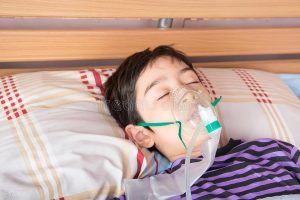Ventilator circuits are essential components of mechanical ventilation for patients with respiratory failure, including pediatric patients. However, these circuits can become contaminated with microorganisms, leading to healthcare-associated infections (HAIs) and increased morbidity and mortality rates. Therefore, it is crucial to follow specific guidelines for decontaminating ventilator circuits in pediatric patients. This article will provide comprehensive information on methods for disinfection and sterilization to prevent HAIs and ensure respiratory care safety.

Guidelines for Decontaminating Ventilator Circuits in Pediatric Patients:
-
- Disinfection Methods:
Disinfection is a crucial step in decontaminating ventilator circuits. The most common disinfectants used in healthcare settings include hydrogen peroxide, sodium hypochlorite, quaternary ammonium compounds, and alcohol-based solutions. However, the choice of disinfectant should be based on the manufacturer's instructions and the type of microorganism present in the circuit. For pediatric patients, it is essential to use disinfectants that are non-toxic and non-irritating to avoid adverse effects.

-
- Sterilization Methods:
Sterilization is the most effective method for decontaminating ventilator circuits. The recommended sterilization methods for pediatric patients include steam sterilization, ethylene oxide (ETO) sterilization, and hydrogen peroxide gas plasma sterilization. However, sterilization methods should be selected based on the manufacturer's instructions and the type of material used in the circuit, as some materials may not be compatible with certain sterilization methods.
-
- Frequency of Decontamination:
The frequency of decontamination depends on the patient's condition and the level of contamination of the circuit. In general, ventilator circuits should be decontaminated between patients, and after 24 to 48 hours of continuous use, or whenever visibly soiled. For pediatric patients, it is recommended to decontaminate the circuits more frequently to prevent HAIs, especially for patients with weakened immune systems.
-
- Decontamination Procedures:
The decontamination procedures should be performed by trained healthcare professionals to ensure proper disinfection or sterilization. The procedures should include the following steps:
-
- Disassemble the ventilator circuit
- Clean the circuit with water and detergent
- Rinse the circuit with clean water
- Disinfect or sterilize the circuit according to the manufacturer's instructions
- Allow the circuit to dry completely before reassembling
-
- Monitoring and Quality Control:
Monitoring and quality control are essential components of decontaminating ventilator circuits. Healthcare facilities should establish a system for monitoring the effectiveness of the decontamination procedures, such as using biological indicators, and conducting regular audits to ensure compliance with the guidelines.
Conclusion:
Decontaminating ventilator circuits in pediatric patients is crucial for preventing healthcare-associated infections and ensuring respiratory care safety. The guidelines for decontamination methods, frequency, procedures, and monitoring and quality control should be followed to minimize the risk of HAIs and protect pediatric patients from harm. By following these guidelines, healthcare facilities can provide high-quality respiratory care for pediatric patients and improve patient outcomes.